After four hours of sleep, our first morning in Nairobi began with a hearty breakfast prepared by the wonderful Bunduz staff before we piled into the truck, en route to the Kenya Wildlife Services (KWS). While waiting in Nairobi traffic—an experience in itself—we saw our mammalian wildlife, a troop of baboons!
Carol, our teaching coordinator, welcomed us at KWS and led us to a classroom where Lillian and Abby, two KWS staff, gave an excellent presentation on what the KWS does. Wildlife is critical to Kenya—48% of the GDP in Kenya depends on wildlife tourism. The KWS oversees 8.20% of the 516,000 km-squared of Kenyan land, protected as national parks, reserves and sanctuaries. The KWS functions to conserve and manage their lands, provide security of wildlife and conservation enforcement, promote conservation via outreach, and regulate research conducted in the reserves and sanctuaries.
There are myriad issues complicating wildlife conservation, despite its central role in the Kenyan economy. Human-wildlife interactions claim one human life each day; poaching and bush meat hunting threaten wildlife populations; habitat fragmentation and degradation devastate land used by wildlife. Despite protection for wildlife within KWS land, 65% of Kenya’s wildlife lives outside these areas.
With these perspectives on conservation and challenges in mind, in the afternoon we headed to Nairobi National Park. At 117 km2, this park is the largest in-city national park in the world. Through our 2-hour game drive, we saw beautiful large mammals and birds, identified and narrated by Alvin, our knowledgeable tour guide. Of note, we saw:
- -A warthog, or “pumba”, in Swahili. Alvin described it as “stupid and ugly”, what with its 30-second memory, but still captivated us as our first mammal siting.
- Two brother lions taking a nap before it was time to patrol their territory.
- A common ostrich with her young. Ostriches mate for life, and a momma can lay 10-20 eggs but only a fraction will survive.
- A superb starling, the most widely distributed bird in Kenya but still incredibly beautiful.
- A pair of Secretary birds, which also mate for life. Their legs are scale-covered for protection from snakes. Secretary bird pairs hunt as a couple.
- Several herds of impala and hartebeests. Thompson’s gazelles occasionally joined impala herds, likely because they strayed too far from their own herd and were in need of protection.
- Water buffalo surrounded by cattle egret, a bird that feeds on the ticks and other parasites afflicting the buffalo.
- A speedy cheetah as it ran across the road.
Today was only a glimpse of what will be to come in the following fortnight, not only in terms of beautiful species sightings, but with respect to beginning to understand the complicated narrative of Kenyan wildlife conservation.
- Impala female Nairobi NP. Photo D. Lougheed
- Vervet monkey. Nairobi National Park Photo D. Lougheed
- Secretary bird. Nairobi National Park Photo D. Lougheed
- Grey heron. Nairobi National Park Photo D. Lougheed
- Male lion. Nairobi National Park Photo D. Lougheed
- Superb starling. Nairobi National Park Photo D. Lougheed
- White-browed sparrow-weaver. Kenyan Wildlife Service HQ. Nairobi
- Discussing the itinerary and major course themes – between two plants a la Zach Galifianakis
- Hartebeest. Nairobi NationalPark Photo D. Lougheed
- Students taking photos in Nairobi National Park. Photo Y Chen
- Arjun taking a photo in Nairobi National Park. Photo Y Chen





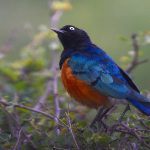
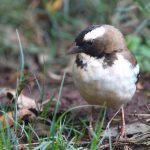
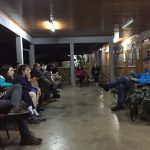
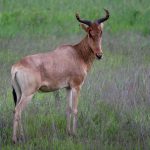

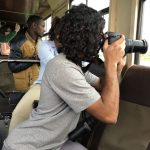
Leave a Reply